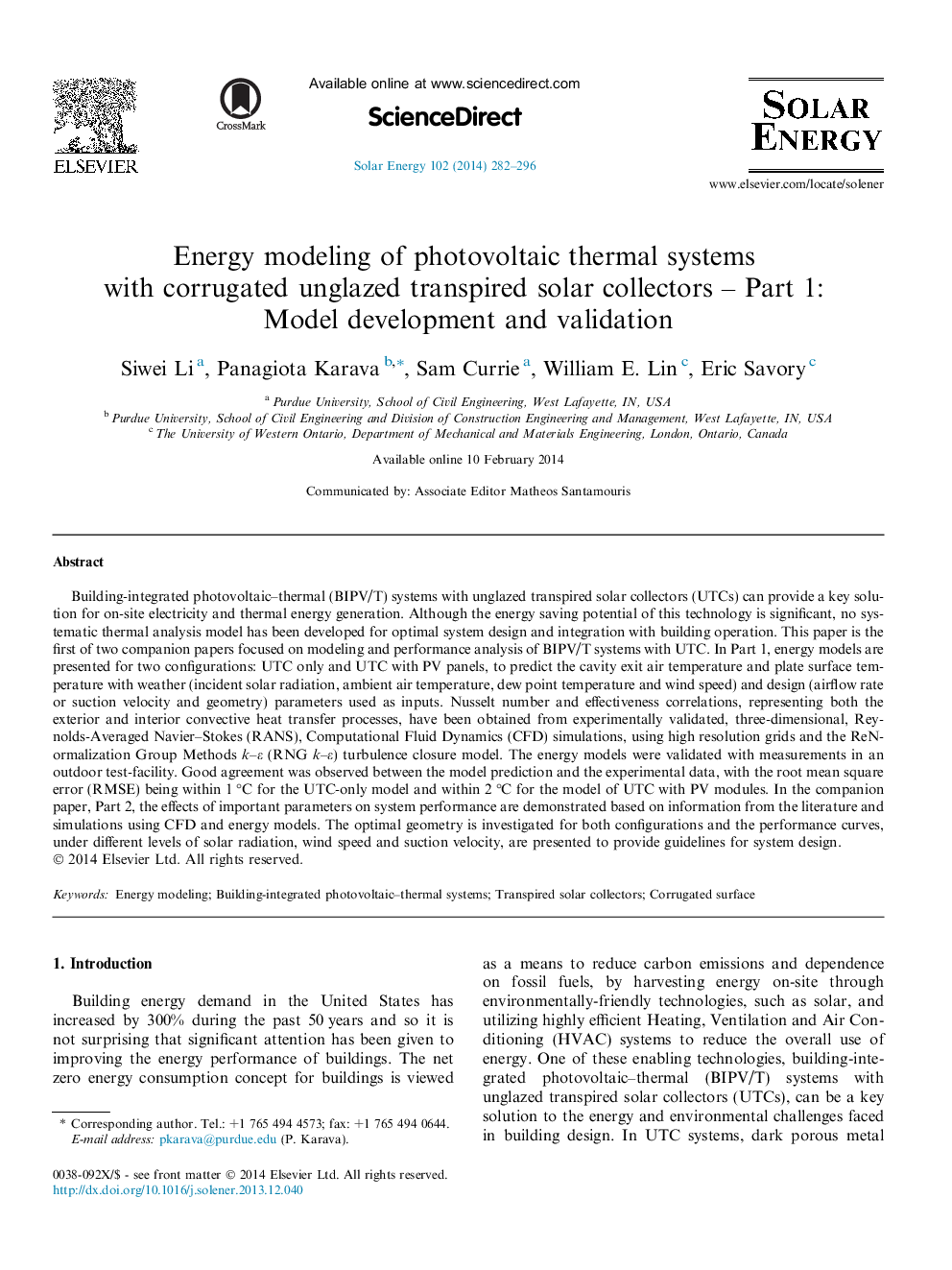| Article ID | Journal | Published Year | Pages | File Type |
|---|---|---|---|---|
| 1550150 | Solar Energy | 2014 | 15 Pages |
•Developed energy models for UTCs and UTCs with PV/T.•Developed Nu number and effectiveness correlations using validated CFD simulations.•Validated the energy models with data from a full-scale experimental set-up.•Demonstrated satisfactory model performance with quantified error bands.
Building-integrated photovoltaic–thermal (BIPV/T) systems with unglazed transpired solar collectors (UTCs) can provide a key solution for on-site electricity and thermal energy generation. Although the energy saving potential of this technology is significant, no systematic thermal analysis model has been developed for optimal system design and integration with building operation. This paper is the first of two companion papers focused on modeling and performance analysis of BIPV/T systems with UTC. In Part 1, energy models are presented for two configurations: UTC only and UTC with PV panels, to predict the cavity exit air temperature and plate surface temperature with weather (incident solar radiation, ambient air temperature, dew point temperature and wind speed) and design (airflow rate or suction velocity and geometry) parameters used as inputs. Nusselt number and effectiveness correlations, representing both the exterior and interior convective heat transfer processes, have been obtained from experimentally validated, three-dimensional, Reynolds-Averaged Navier–Stokes (RANS), Computational Fluid Dynamics (CFD) simulations, using high resolution grids and the ReNormalization Group Methods k–ε (RNG k–ε) turbulence closure model. The energy models were validated with measurements in an outdoor test-facility. Good agreement was observed between the model prediction and the experimental data, with the root mean square error (RMSE) being within 1 °C for the UTC-only model and within 2 °C for the model of UTC with PV modules. In the companion paper, Part 2, the effects of important parameters on system performance are demonstrated based on information from the literature and simulations using CFD and energy models. The optimal geometry is investigated for both configurations and the performance curves, under different levels of solar radiation, wind speed and suction velocity, are presented to provide guidelines for system design.
